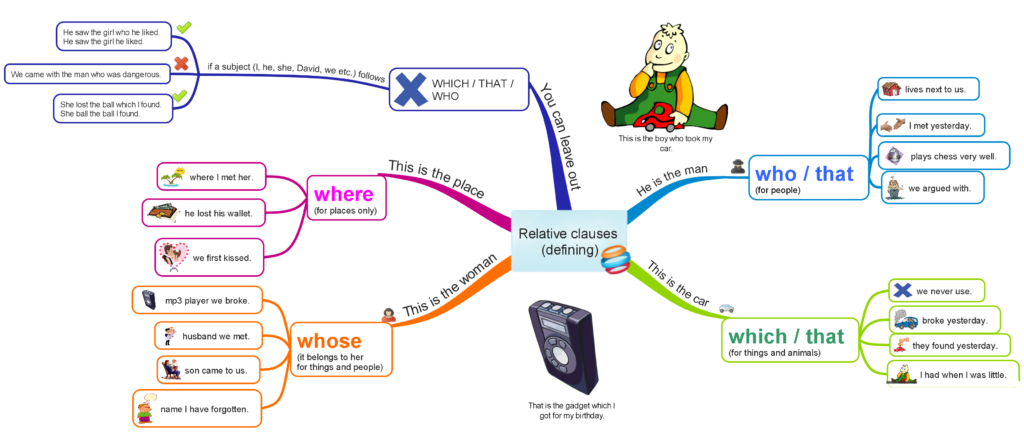Propoziții relative (Defining Relative Clauses)
We use defining relative clauses to give information about a noun in a sentence. The listener or reader NEEDS this information to understand the sentence.

A doctor is a person who cures sick people.
The girl who sits next to me at work has a bag just like yours.
Form:
- Use who to give more information about a person.
An architect is a person who designs buildings.
- Use which or that to give more information about a thing.
A corkscrew is a thing which you use to open bottles.
The book that you gave me for my birthday is really interesting.
- Use where to give more information about a place.
That’s the place where we got married.
The town where my uncle lives is a few miles from here.
- Because non-defining relative clauses give essential information, no commas (,) are needed.
- If the noun which the relative clause describes (usually at the beginning of the sentence) is the OBJECT of the sentence, you can delete which, that or who.
The man who is wearing the blue suit is my brother.
The man is the subject of the sentence. You cannot delete who.
The man (who) George is talking to is my brother.
George is the subject of the sentence.
The man is the object of the sentence.
(The sentence can be rewritten: George is talking to a man. The man is my brother). So you can delete who.
The book you lent me is really good.
You is the subject of the sentence.
The book is the object of the sentence.
(The sentence can be rewritten: You lent me a book. The book is really good. Which / that is not necessary.)
The book which is on the table is really good.
The book is the subject of the sentence. (The sentence can be rewritten: The book is on the table. It’s really good. Which / that is necessary.)
NOW TEST YOUR KNOWLEDGE!
Defining/ non-defining relative Clauses
Defining/ non-defining relative Clauses. Is the pronoun necessary?





